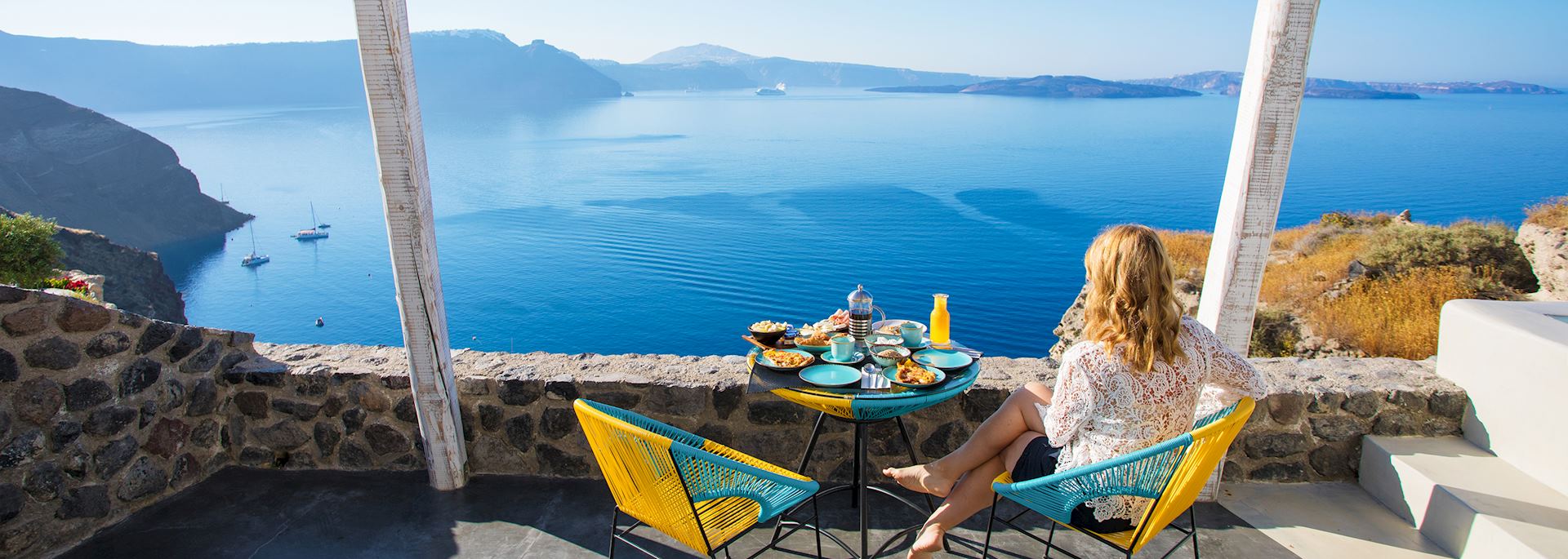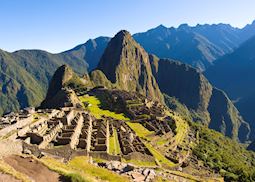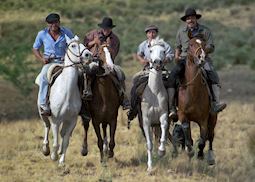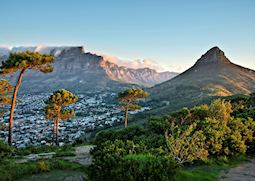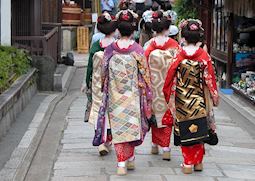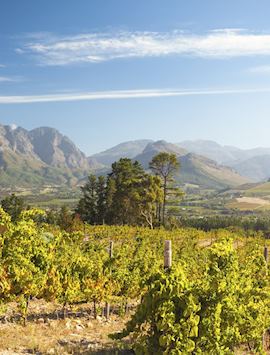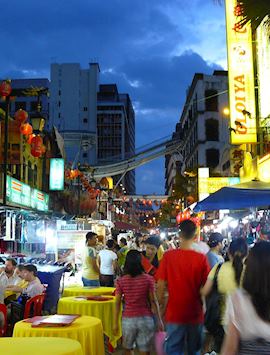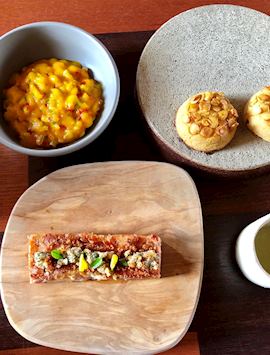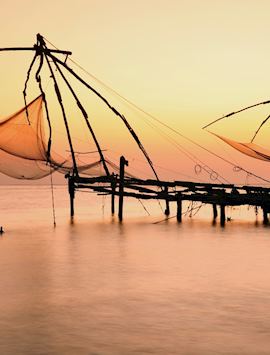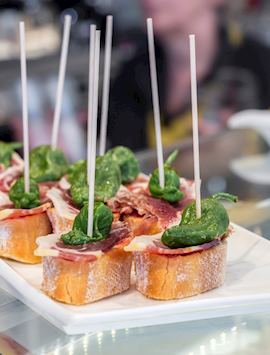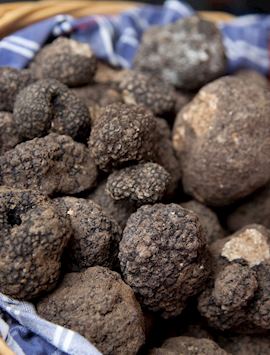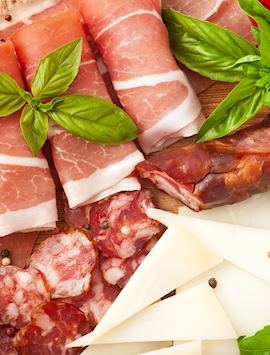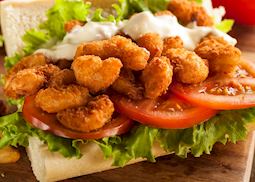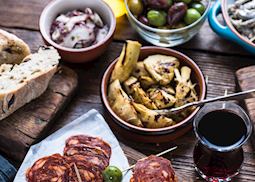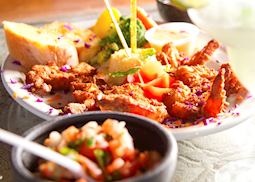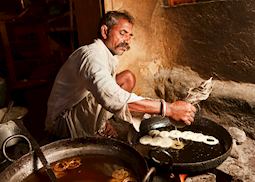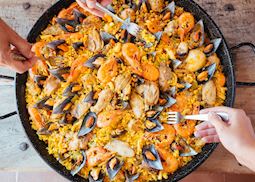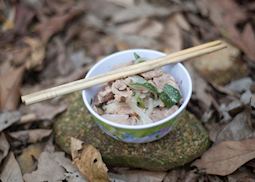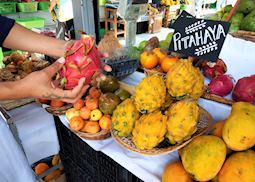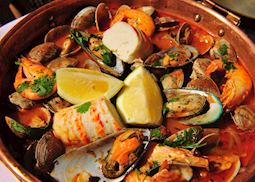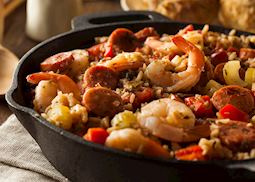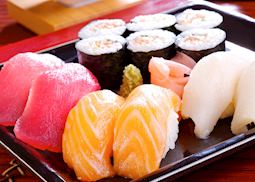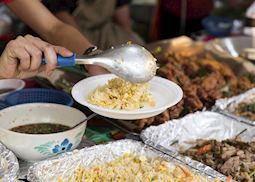The thunk of your cooking instructor’s knife on a cutting board, the smooth elasticity of hand-rolled pasta in a nonna’s kitchen, the fragrant smoke of a street-stall grill in Vietnam, and the slanting golden light of harvest time in vineyards from Napier to Napa Valley… Our tailor-made food and wine holidays satisfy all your senses, not just taste.
Your specialist will have experienced first-hand all these sensations and more, and will craft a culinary-themed trip entirely around your personal palate. They have the experience to help you find authentic local dishes, introduce you to farmers and vintners, point you to the best eateries around the world, and choose local guides who know the food scene. We also know the best places for gourmets to stay — hotels with Michelin-starred restaurants, inns with hands-on cooking classes, and B&Bs on working farms that serve hyperlocal cuisine.

Start planning your tailor-made trip by contacting one of our Global Travel Advisors
-
01993 838 92501993 838 925
- Make an enquiry
Our top food and wine trip ideas
Our itinerary ideas will give you a starting point for what your trip could entail. Treat them just as inspiration, as each trip is created uniquely for you and there are many more options available.
Our expert guides to planning your culinary holidays
Penned by our specialists from their own travels, these guides aim to inspire you with suggestions of where to spend your vacation. Giving tips for what to experience and recommendations for where to stay, we share our ideas for the best destinations to consider.
-
Lobster rolls to mooncakes — eating in the United States ![Shrimp Po Boy, New Orleans]()
Lobster rolls to mooncakes — eating in the United States
Lobster rolls to mooncakes — eating in the United States
The fastest way to a country’s heart is through your stomach. Our specialists suggest the best ways to discover regional specialties across the United States, from creole cuisine in New Orleans to a lobster roll on Cape Cod.
Read this guide -
7 delicious culinary experiences for the well-travelled foodie ![Assorted tapas]()
7 delicious culinary experiences for the well-travelled foodie
7 delicious culinary experiences for the well-travelled foodie
One of the best ways to get to know a place is through its food, be it a food tour with a local resident or an invitation into a family home. Our specialists chose seven experiences that might see you trying bunny chow in Cape Town or preparing a tagine in Fez.
Read this guide -
A beginner’s guide to Croatian food ![Traditional Croatian peka]()
A beginner’s guide to Croatian food
A beginner’s guide to Croatian food
Full-bodied red wines, truffle-infused cheeses and lamb roasted over an open wood fire — these are just a few of the delicacies you can discover in Croatia. Specialist Casey suggests five experiences that will let you explore the country’s culinary heritage.
Read this guide -
Food and wine experiences in New South Wales ![Seafood meal]()
Food and wine experiences in New South Wales
Food and wine experiences in New South Wales
From tasting wine in the vine-woven Hunter Valley to fishing the subtropical waters of Lord Howe Island, New South Wales provides a banquet of experiences that help you explore its blossoming food and wine scenes. Our specialists choose some of the best options.
Read this guide -
Food highlights of India: 6 of the best culinary experiences ![Indian street food vendor]()
Food highlights of India: 6 of the best culinary experiences
Food highlights of India: 6 of the best culinary experiences
India specialist John talks about his love of Indian cuisine and picks six food experiences for you to try. Take a street-food tour in Delhi, dine on a Keralan houseboat or learn to make Indian breads with an expert.
Read this guide -
The taste of Spain: a Spanish food guide ![Paella, Spain]()
The taste of Spain: a Spanish food guide
The taste of Spain: a Spanish food guide
Food is central to Spanish life, both for locals and visitors. From saffron-scented paella and nutty jamón ibérico to convivial tapas and cold, creamy salmorejo, our specialists offer a sampling of the best dishes they’ve eaten in country.
Read this guide -
A food journey through Vietnam: bun cha to banh mi ![Pho bo (Vietnamese beef noodles), a classic dish eaten throughout Vietnam]()
A food journey through Vietnam: bun cha to banh mi
A food journey through Vietnam: bun cha to banh mi
Vietnam’s cuisine varies from being more salty in the north to spicier in the south. Country Specialist, Lauren, selects some of her top dishes and where to try them such as Vietnam’s national dish pho, bun cha in Hanoi and cao lau noodles in Hoi An.
Read this guide -
Standout food experiences you can try in Peru (chosen by a food lover) ![Fruits at market on Lima culinary tour]()
Standout food experiences you can try in Peru (chosen by a food lover)
Standout food experiences you can try in Peru (chosen by a food lover)
Peru’s food scene is courting attention for good reason, says specialist Josh. He outlines some of the food-related experiences you can include in your own trip, and shares his tips for eating well in this part of South America.
Read this guide -
What to do in Thailand: our highlights guide ![The White Temple, Chiang Rai]()
What to do in Thailand: our highlights guide
What to do in Thailand: our highlights guide
From Bangkok’s Grand Palace to Chiang Mai’s temples and the Andaman Coast’s powdery beaches, specialist David showcases what you could experience on a trip to Thailand, focusing on the headline sights and destinations.
Read this guide -
Eat your way around Portugal ![Cataplana, Algarve]()
Eat your way around Portugal
Eat your way around Portugal
Portuguese food isn’t as well known as Spanish cuisine, but it holds similar charms. Discover why locals prefer bacalhau to fresh cod, where people line up to get custard tarts and why a small town bakes phallic pastries.
Read this guide -
Food highlights of Italy ![Italian market produce]()
Food highlights of Italy
Food highlights of Italy
Italy specialist Caroline talks about her love of Italian food in this guide, focusing on the more renowned culinary cities and regions. She also talks about her experiences of creating pasta, catching fresh fish for dinner in Sorrento, wine tasting in Tuscany's Chianti region and where to eat like a local.
Read this guide -
A New Orleans food guide ![Spicy Homemade Cajun Jambalaya]()
A New Orleans food guide
A New Orleans food guide
From a steaming bowl of belly-warming seafood gumbo to a creamy-sweet praline studded with pecans to a plate of oyster Rockefeller at Antoine’s — USA specialist Natalie introduces you to the distinctive culinary pleasures of New Orleans.
Read this guide -
What to eat in Japan: sushi and beyond ![Mixed sushi]()
What to eat in Japan: sushi and beyond
What to eat in Japan: sushi and beyond
You might know your sushi, but it’s just the tip of a cuisine that’s garnered UNESCO heritage status. Our Japan specialists delve into some of the culinary experiences Japan has to offer, from kaiseki multi-course dinners to convenience-store specialties.
Read this guide -
Southeast Asian cuisine ![Thai street food]()
Southeast Asian cuisine
Southeast Asian cuisine
Trade routes, historic connections, colonialism and common sources of ingredients have left many strong links between the dishes found throughout Southeast Asia. We investigate the very distinct national variations that have evolved in this region.
Read this guide -
Morocco food experiences ![Moroccan cuisine]()
Morocco food experiences
Morocco food experiences
Influenced over the centuries by numerous cultures, Moroccan cuisine is renowned for its delicious taste. We recommend dishes you should try and places to eat to help you make the most of your Moroccan food experience.
Read this guide -
How to eat like the Romans do ![The Art of Pizza, Rome]()
How to eat like the Romans do
How to eat like the Romans do
Bold, powerful and deceptively simple, Roman cuisine is often overlooked. That’s a shame, says Italy specialist Nick, a one-time resident of Rome. He talks about where to eat the city’s signature dishes and why you shouldn’t buy bottled water when you visit.
Read this guide
